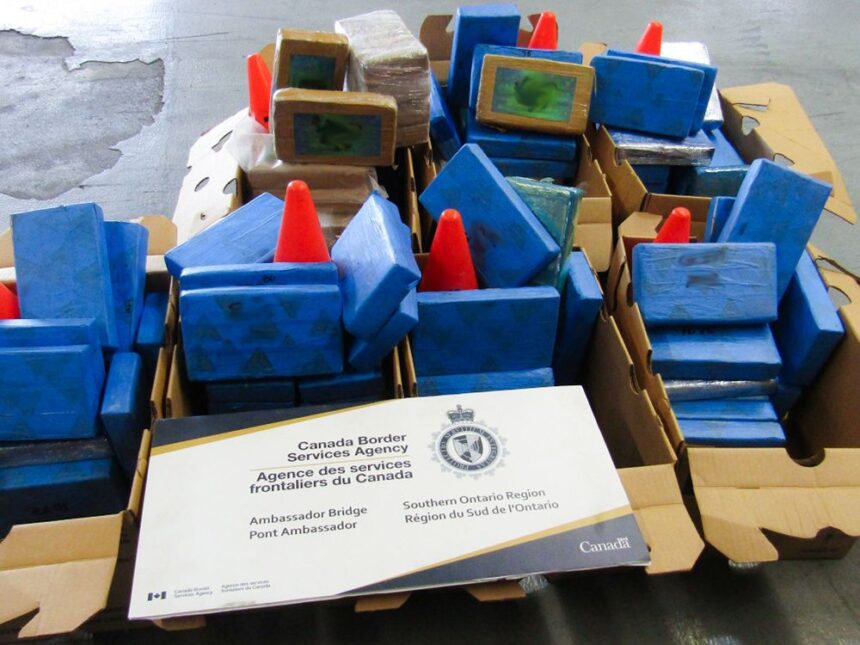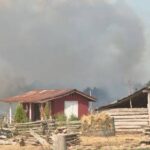In a stunning demonstration of cross-border enforcement, Canadian authorities have intercepted nearly $50 million worth of cocaine concealed in commercial trucks attempting to enter Canada from the United States. The massive seizure, one of the largest in recent years, highlights the ongoing battle against sophisticated drug trafficking operations utilizing legitimate transportation networks.
The Canada Border Services Agency (CBSA), working in coordination with the Royal Canadian Mounted Police (RCMP), discovered the narcotics during routine inspections at multiple border crossings. According to officials, the cocaine was ingeniously hidden within secret compartments of commercial vehicles, designed specifically to evade standard detection methods.
“What we’re witnessing is an evolution in smuggling techniques,” said Inspector Sarah McKenzie of the RCMP’s Border Integrity Unit. “These weren’t amateur operations. The compartments were professionally constructed with hydraulic systems that required specialized knowledge to access.”
The investigation spanned several weeks and involved intelligence sharing between Canadian and American law enforcement agencies. Authorities believe the seizure has disrupted a major supply chain connected to organized crime syndicates operating on both sides of the border.
The economic impact of such large-scale drug trafficking extends beyond the immediate street value of the narcotics. Financial crime experts estimate that interrupting this supply chain will significantly impact downstream criminal enterprises that rely on cocaine distribution networks to finance other illicit activities including money laundering and weapons trafficking.
“This seizure represents approximately 1,000 kilograms of cocaine that won’t reach Canadian communities,” said Federal Public Safety Minister Marco Mendicino in a statement. “The street-level impact is immeasurable in terms of lives potentially saved and harm prevented.”
The bust comes amid growing concerns about increased drug trafficking activity along the Canada-US border. The COVID-19 pandemic initially disrupted traditional smuggling routes, but traffickers have adapted with new strategies that exploit supply chain vulnerabilities and border staffing challenges.
Intelligence analysts monitoring global narcotics trends note that cocaine production in South America has reached record levels, creating pressure to find new distribution channels. Canada, with its relatively high cocaine prices compared to the United States, presents an attractive market for international trafficking organizations.
“What makes this case particularly concerning is the sophistication of the concealment methods,” said Dr. Julian Sher, author and expert on organized crime. “These aren’t bundles simply thrown in a hidden compartment. We’re seeing custom-built solutions that suggest professional engineering and significant financial investment.”
Several arrests have been made in connection with the seizure, though authorities have declined to provide specific details, citing ongoing investigations. Sources familiar with the case indicate that the investigation has expanded to include potential connections to larger transnational criminal networks operating throughout North America.
The operation also underscores the critical importance of technological investments in border security. Several of the cocaine shipments were reportedly detected using newly deployed scanning equipment capable of identifying density anomalies in commercial vehicles.
As Canadian political leaders debate approaches to addressing the broader drug crisis, this seizure raises important questions about the balance between enforcement and harm reduction strategies. While large-scale interdiction efforts disrupt supply chains, public health experts emphasize that demand-side interventions remain equally crucial.
As border agencies process this significant victory against drug trafficking, the larger question remains: how will criminal organizations adapt their strategies in response to this major disruption, and what will be the next frontier in the ongoing battle to secure North America’s shared border?






















